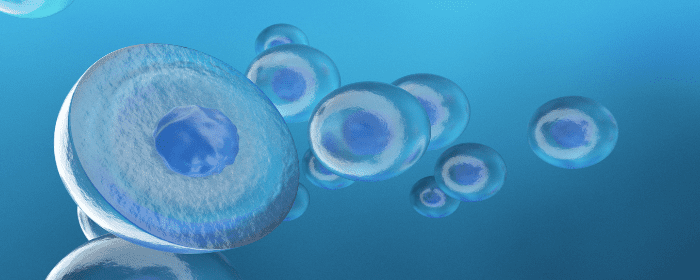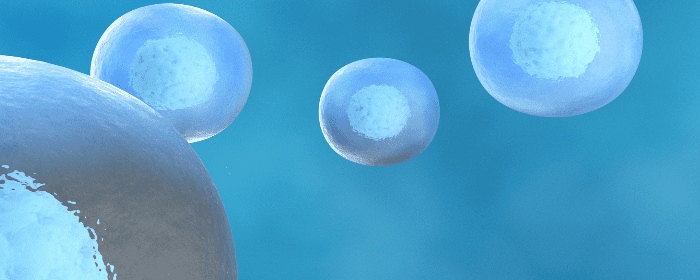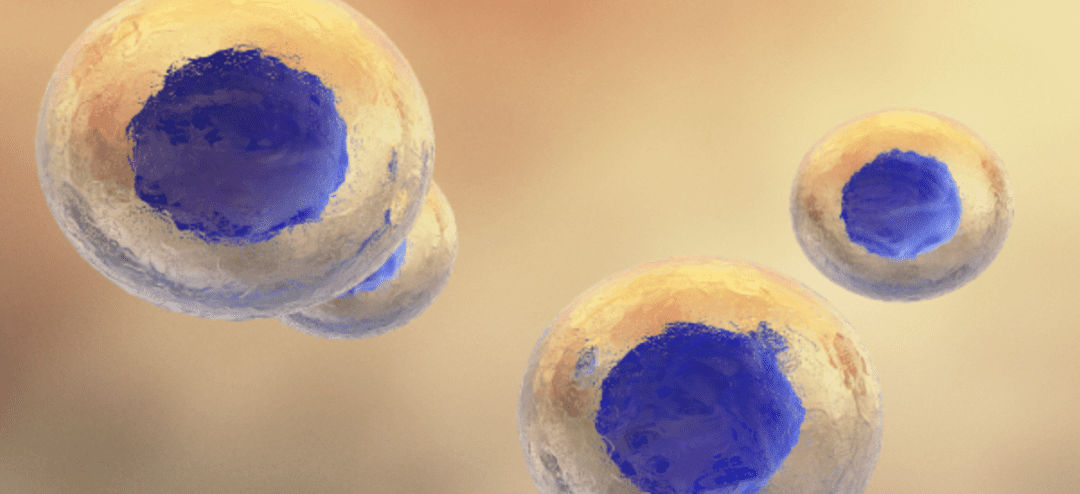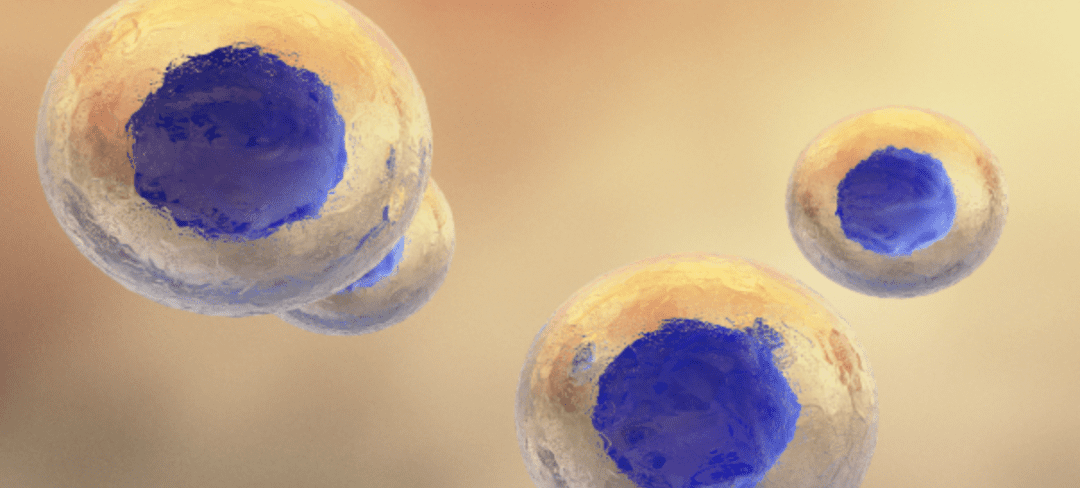
by admin | Apr 1, 2022 | Stem Cell Therapy, Adipose, Mesenchymal Stem Cells, Musculoskeletal, Wharton's Jelly
Articular cartilage, found on the surface of most musculoskeletal joints, distributes and transfers forces between bones and joints, provides a smooth surface for joint mobility, and plays an important role in human mobility.
However, articular cartilage is also easily susceptible to damage, but difficult to repair itself on its own (primarily due to the fact it is mostly avascular). Over time, the inability of articular cartilage to repair itself leads to progressive joint pain, disfigurement, movement disorders, and ultimately osteoarthritis.
The CDC estimates that nearly 33 million Americans are currently affected by osteoarthritis, most often in the form of pain, stiffness, decreased mobility and range of motion, and swelling in the joints[1].
Current treatment methods, including microfracture technology, autologous or allogeneic cartilage transplantation, and autologous chondrocyte implantation (ACI) have demonstrated the ability to repair and regenerate fibrous cartilage, but not articular cartilage required for smooth, fluid, natural mobility.
To address this issue, recent research has focused on the efficacy of stem cells, and specifically mesenchymal stem cells (MSCs) found in bone marrow, adipose tissue, synovial membrane, and umbilical cord Wharton’s jelly, as potential therapeutic treatments for regeneration of articular cartilage. MSCs are particularly of interest due to their demonstrated abilities of self-renewal, multi-differentiation, and immunoregulation.
While the use of MSCs has demonstrated tremendous potential in the field of regenerative therapy, one notable drawback continues to be unstable or suboptimal results resulting from the heterogeneity of various mesenchymal stem cells.
Specifically, the stability and efficacy of MSCs appear to differ based on a number of factors, including the donor, the tissue source, and their ability for proliferation, differentiation, and immunoregulation.
For example, some of the key heterological differences highlighted in this review include the efficacy of MSCs based on donor’s age (with younger donors providing higher quality MSCs), Wharton’s Jelly MSCs showing greater prospects for application in cartilage regeneration than other MSCs, and differences within specific MSC subpopulations.
The authors of this review acknowledge the potential of MSCs in repairing arterial cartilage, but also point out that there needs to be a deeper understanding of the heterogeneity of various MSCs in order to improve the efficiency of MSC-based therapies designed to repair arterial cartilage. In addition, the authors also call for greater standardization in MSC isolation and harvesting methods among laboratories in order to provide better consistency with respect to results obtained from studies using MSCs.
Source: “Heterogeneity of mesenchymal stem cells in cartilage regeneration.” 19 Mar. 2021, https://www.nature.com/articles/s41536-021-00122-6?elqTrackId=5517bd20493b470cb34fd0e8bc1f6ef9.
[1] “Osteoarthritis (OA) | Arthritis | CDC.” https://www.cdc.gov/arthritis/basics/osteoarthritis.htm.

by admin | Mar 25, 2022 | Mesenchymal Stem Cells, Neurodegenerative Diseases, Stem Cell Research, Stem Cell Therapy
Neurodegenerative conditions such as Alzheimer’s disease (AD), Parkinson’s disease (PD), and amyotrophic lateral sclerosis (ALS) occur when neuron populations begin to diminish. There is currently no cure for these types of diseases, though clinical trials to explore various treatment options are ongoing. In particular, regenerative medicine, also known as stem cell therapy, is being heavily researched and has shown remarkable progress in controlling these conditions.
Types of Stem Cells
Stem cells serve as the foundation for every tissue and organ throughout the body. They are unspecialized but have the incredible ability to differentiate into virtually any cell type, as well as the power to self-renew.
Neurodegenerative conditions are characterized by neurons that progressively lose their function and structure, and eventually die off. Because stem cells are able to differentiate into multiple cell types, researchers have begun exploring whether they could replace or repair damaged neurons to control the progression of, or potentially even reverse the damage done by, these illnesses. Existing treatment options are limited, but many researchers are optimistic about stem cells’ potential.
Not all stem cells are the same. Here are the various types, some of which show more efficacy as a treatment for neurodegenerative disease than others:
- Tissue-specific stem cells: These somewhat specialized stem cells can generate multiple organ-specific cells and are typically located in areas of the body that can self-replenish, such as the skin and blood.
- Embryonic stem cells (ESCs): Located in blastocysts, ESCs are especially promising in neurodegenerative applications. Yet, they do pose some risks, including the risk of rejection. Due to their ability to differentiate into neurons, however, they continue to be studied as a potential therapy.
- Induced Pluripotent Stem Cells (iPSCs): iPSCs are artificially derived from adult cells and programmed back to pluripotency, thereby allowing for an unlimited source of any cell type. While they are widely used for developing medications and disease modeling, further research must be done to refine the reprogramming process.
- Mesenchymal Stem Cells (MSCs): MSCs can differentiate into several types of cells. Their self-renewal capabilities are far-reaching, making them an ideal candidate for therapies involving tissue repair. They may also be leveraged for cell transplantation in the treatment of neurodegenerative diseases.
- Neural Stem Cells (NSCs): NSCs are derived from specific areas of the brain and are therefore specialized cells. They, too, are self-renewing and multipotent.
Types of Neurodegenerative Conditions Regenerative Medicine can Help Manage:
While researchers are uncovering new findings on how stem cells can treat neurodegenerative conditions nearly every day, there has already been progress. Here are some of the conditions stem cell therapy has been used to manage:
- Parkinson’s Disease (PD): One hallmark characteristic of PD is the decline of dopamine, caused by the destruction of dopamine-producing brain cells. As dopamine decreases, symptoms such as muscle tremors, challenges with movement, and difficulty thinking arise. Now, researchers have found that stem-cell-derived dopaminergic neurons — in particular, those created through ESCs and iPSCs — could hold success in replacing the destroyed brain cells in individuals with PD.
- Alzheimer’s Disease: Through the use of stem cell therapy, researchers at Columbia University have refined the protocol for a unique process of converting skin cells into brain cells. This option streamlines the process of creating neurons to replace those which have become damaged by Alzheimer’s disease. In their research, the cells were able to receive signals just as normal neurons would.
- ALS: ALS has proven remarkably challenging to study, as there are many potential causes and therapies may therefore only be effective on specific patient populations. Moreover, the motor neurons, which are directly impacted by the condition, couldn’t be acquired in large enough numbers to study. Now, however, Harvard researchers have been able to derive mature cells that can be manipulated back into stem cells from ALS patients, opening up new doors for studying potential therapies to treat the condition.
While there is more ground to cover before stem cell therapy for neurodegenerative conditions can become mainstream, promising research is consistently being published. Moving forward, it’s likely that stem cells will hold the answer to viable management options for these and other challenging conditions.

by Stemedix | Mar 21, 2022 | Stem Cell Therapy, Autoimmune, Mesenchymal Stem Cells
For decades, autoimmune diseases such as Lupus, Rheumatoid Arthritis, and chronic obstructive pulmonary disease (COPD) have posed a major challenge to researchers and healthcare providers. While medical interventions have evolved tremendously in the last few decades, these serious conditions remain notoriously difficult to treat. Here we talk about Stem Cell for Autoimmune Diseases, Specifically Mesenchymal stem cells!
Fortunately, mesenchymal stem cells may be a potentially effective treatment option for many patients suffering from various autoimmune conditions. While the efficacy of this intervention varies depending on unique patient factors, individuals who have had little to no success with traditional interventions may find it useful to consider MSC therapy.
What Are MSCs?
Mesenchymal stem cells are a special type of cell that can transform into other types of cells. MSCs can become specialized cells such as those that form muscular tissue, cartilage, and many others. MSCs can be harvested from many different locations, including bone marrow, adipose (fat) tissue, and the Wharton’s Jelly within umbilical cords.
Once harvested, MSCs can be administered to help manage various conditions and their symptoms. MSCs are typically administered through a systemic application into the blood system. However, they can also be directly administered to have a more targeted impact on a specific area depending on the patient’s case.
Can MSCs Be Used to Treat Autoimmune Diseases?
While MSCs are still being studied, research has indicated that MSCs can be an effective intervention for many different autoimmune conditions, including COPD.
Specifically, mesenchymal stem cells have been effective at treating chronic inflammation, which is a common symptom in many autoimmune patients.
However, every case and patient is unique. Therefore, treatment decisions should be made with the guidance of a licensed medical professional. An experienced care provider can thoroughly review your medical history and condition to help you select the best treatment plan for your needs.
Potential Benefits of Stem Cell for Autoimmune Diseases MSCs
Mesenchymal stem cells have the unique potential to reduce inflammation in individuals suffering from an autoimmune disease, such as Lupus or Rheumatoid Arthritis. There is a correlation between a reduction in inflammation and improvements in other disease symptoms. However, the strength of this correlation is still being researched.
With that being said, MSCs may reduce the severity of many common autoimmune symptoms, including pain and fatigue.
Although research is still in progress, mesenchymal stem cell therapy has shown promise for patients looking for an alternative option. With new advancements in medical tools and therapeutic methodologies, patients who suffer from autoimmune disorders may soon have more options for relief than ever before. If you are interested in learning more about Stem Cell for Autoimmune Diseases, contact us today and speak with a care coordinator!

by Stemedix | Mar 14, 2022 | Stem Cell Therapy, Degenerative Disc Disease
Degenerative disc disease is one of the most common and misunderstood causes of lower back pain and neck pain. Instead of referring to a specific ailment, degenerative disc disease is a catch-all term covering many conditions that arise due to general wear and tear on a spinal disc. Here we will talk about Degenerative Disc Disease: Steroids Vs Stem Cell Therapy.
The word “degenerative” implies that the symptoms occur in older people and worsen with age. However, it refers to the disc degenerating over time. While most patients with degenerative disc disease are in their 30s or 40s, it’s not uncommon to present in patients in their 20s.
Symptoms of Degenerative Disc Disease
Patients with degenerative disc disease are generally active and otherwise healthy. Symptoms that many patients experience include:
- Pain that is worse when sitting
- Pain that worsens when bending, lifting, or twisting
- Feeling better when walking or running than standing
- Periods of severe pain that come and go
- Numbness or tingling in extremities
- Weakness in arms or legs
- Hot, shooting pain in the arms or legs
Most patients with degenerative disc disease experience chronic low-level pain with episodes of severe pain.
Treatment Options for Degenerative Disc Disease
Many patients with degenerative disc disease experience relief from natural treatments or lifestyle changes that alleviate pressure and strengthen the muscles around the affected disc. These include:
- Physical therapy
- Occupational therapy
- Weight loss
- Personalized exercises
When these options don’t provide relief, medical interventions may be necessary. Medical practitioners’ standard treatments for degenerative disc disease are surgical intervention or epidural steroid injections. However, the emergence of regenerative medicine, also known as stem cell therapy, adds a new, viable option for degenerative disc disease.
Surgical Intervention
Surgical options for those suffering from degenerative disc disease may alleviate pain but don’t always address the root cause. The least intrusive surgical option is a microdiscectomy, removing the intervertebral disc fragments that cause pain by compressing the spinal nerve root.
Another surgical option to treat degenerative disc disease is spinal fusion surgery. In this procedure, patients find relief through fusing the vertebrae around the injured disc, limiting the movement of the affected disc.
Unfortunately, the fused vertebrae divert the pressure over time to other spine areas, and new problems often arise, such as herniation, stenosis, or spondylosis.
Lastly, some patients opt for a total disc replacement surgery, where an artificial disc replaces the affected disc. Total disc replacement surgery often sees the same outcomes as spinal fusion surgery.
Epidural Steroid Injections
Many patients who want to avoid surgery find pain relief through steroid injections. Steroids provide powerful anti-inflammatory medications to the herniated disc, reducing the sensitivity of nerve endings and triggering the body’s natural healing process.
While steroid injections are an effective tool for treating disc herniation, they are less effective in treating deeper disc issues.
Stem Cell Therapy
New research reveals that adult stem cells may effectively treat back pain caused by degenerative disc disease. Since the spine’s discs have a minimal blood supply, their ability to heal themselves is limited.
However, stem cells’ uniqueness lies in their ability to repair damage. When injected into a damaged disc, they have the potential to regenerate the ligaments, repair soft tissue damage and promote healing. In some cases, stem cell injections restore disc heights to normal levels, and alleviate pain in. Relief and improvements have been reported to be felt within six months of therapy.
Treatments for degenerative disc disease have long fallen short of providing a long-term solution to ongoing pain. However, the emergence of stem cell therapy as a treatment offers new hope for those suffering from chronic back pain. If you are interested in learning more about steroids vs stem cell therapy contact a care coordinator today and schedule a free consultation. If you would like to take a look at some of reviews you can do so here!

by Stemedix | Mar 7, 2022 | Multiple Sclerosis, Stem Cell Therapy
As one of the most common neurodegenerative disorders, multiple sclerosis (MS) affects millions of patients. This progressive condition can cause everything from muscle weakness to double vision. Regenerative medicine is showing new potential when it comes to treating multiple sclerosis. Read on to learn more about how stem cells can help patients with MS.
What Happens During Multiple Sclerosis Flares?
In multiple sclerosis, a person’s immune system attacks the myelin of their nerve fibers. Myelin is a material that forms a protective layer, or sheath, around nerve fibers and shields them from damage. When the immune system attacks the myelin sheath, it causes inflammation and lesions that make it difficult for the brain to send signals throughout the rest of the body.
While there is no cure for multiple sclerosis, patients may undergo a wide variety of treatments to manage their symptoms. This may include physical therapy, immunosuppressants, steroids, and beta-blockers. Regenerative medicine, also known as stem cell therapy, is also showing great potential when it comes to managing multiple sclerosis and its symptoms.
Stem Cells and Multiple Sclerosis
Regenerative medicine works within the body at a cellular level, stimulating a healing response that can address certain symptoms of multiple sclerosis. Various types of stem cells have the potential to regenerate lost or damaged cells, including those that form the myelin sheath. This has the potential to improve the lives of MS patients, whose myelin layers have been damaged by inflammation.
The following are three types of stem cells that can be used to treat multiple sclerosis:
Haematopoietic Stem Cells (HSCs)
Haematopoietic stem cells are adult stem cells found in the blood and bone marrow. These cells play an active role in immune function.
Mesenchymal Stem Cells (MSCs)
Mesenchymal stem cells (MSCs) are present in umbilical cords and fat tissue. These cells help promote the function of other stem cells throughout the body.
Neural Stem Cells (NSCs)
Neural stem cells are specialized stem cells that can repair the myelin in the brain. These cells can come from other stem cells, such as mesenchymal stem cells.
How Can Stem Cell Therapy Manage MS Symptoms?
Stem cell therapy can modulate the immune system, temporarily disabling the abnormal attacks on myelin tissue. When the immune system is no longer destroying healthy myelin cells surrounding nerve fibers, it can help slow the progression of multiple sclerosis conditions and potentially improve symptoms.
When patients receive stem cell therapy to treat their multiple sclerosis, they may experience some of the following benefits:
- Reduction of muscle spasticity
- Increased energy
- Improved balance
- Enhanced concentration
- Decrease in visual disturbances
- Improved range of motion
- Reduction of muscle pain
While stem cell therapy has the potential to manage MS symptoms, it is still considered an experimental treatment and can not guarantee a cure. Although stem cell therapy is not FDA approved, there has been research to suggest it is safe and patients result in positive outcomes. Patients must have realistic expectations when choosing regenerative medicine for multiple sclerosis but it may be an option worth exploring. If you are interested in learning more about how Stem cells can help patients with MS, contact us today and speak with a care coordinator.

by Stemedix | Jan 24, 2022 | Stem Cell Therapy, Pain Management
Patients who suffer from ongoing intractable pain know how debilitating it can be. Pain becomes your default state as you try to cope with your chronic condition. Many chronic pain management methods only mask the underlying symptoms causing your pain. But there might be an option that helps chronic pain and potentially the underlying causes of the pain. Here we talk about stem cell therapy for pain.
Healing and Regeneration with Stem Cells
Stem cells do not have a specified function in your body until they are “programmed” into a certain role. Stem cell therapy can direct your new stem cells to the source of your chronic pain to potentially help the root of the problem. These cells help your body heal and regenerate important tissues that would otherwise remain damaged.
This type of therapy can reduce inflammation and pain at the site of injuries and damaged tissues. Stem cells speed up healing and bring extra resources to the parts of your body that need them most.
Chronic Pain Conditions
You might be wondering if you are a candidate for stem cell therapy. Depending on the underlying medical condition you suffer from, you could potentially benefit from stem cell treatments.
Some conditions that cause chronic pain include:
These are just a few of the chronic conditions that cause severe pain that may have potential benefits with stem cell therapy. This type of treatment may provide life-changing relief for many patients. When pain is part of your daily life, relief can bring you a whole new perspective on life.
Reduce Inflammation and Autoimmune Responses
A large number of chronic pain conditions fall under the autoimmune umbrella. These conditions are characterized by a lot of inflammation in your body. Inflammation is a healthy immune response when properly regulated by your body. However, excess inflammation can damage your tissue and cause chronic pain over time.
Stem cells travel to the sites of inflammation to produce anti-inflammatory responses. This helps your immune system regulate excessive responses to perceived threats. The result is that your pain may be greatly reduced, and your body can restore balance with inflammatory responses.
Cutting-Edge Chronic Pain Treatment
Stem cell therapy is a cutting-edge pain treatment that is backed by studies and research. Patients have shown great improvement after stem cell therapy in numerous studies. While stem cell therapy is not a cure for chronic pain conditions, it may improve your body’s pain levels. Patients are exploring this new alternative therapy to find options in their healing journeys. If you would like to learn more or schedule a consultation, contact us today!







 St. Petersburg, Florida
St. Petersburg, Florida
